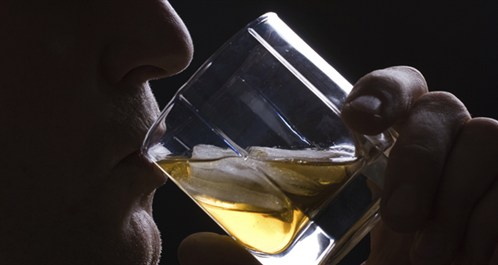- Alcohol is the most commonly used addictive substance in the United States. It is popular, socially accepted, and legal. It is also the most frequent cause of individual and family pain and suffering. According to the National Council on Alcoholism and Drug Dependence:
- 17.6 million people, or one in every 12 adults, suffer from alcohol abuse or dependence along with several million more who engage in risky, binge drinking patterns that could lead to alcohol problems.
- More than half of all adults have a family history of alcoholism or problem drinking.
- More than 7 million children live in a household where at least one parent is dependent on or has abused alcohol.
Yet, for many people, the facts about alcohol and alcoholism are not clear. To help you better understand the difference between safe alcohol consumption and what signs could indicate a problem, we’ve compiled a few Frequently Asked Questions.
Question: What is a “standard drink” of alcohol?
Answer: A standard alcohol drink contains about 14 grams of pure alcohol (0.6 ounces):
- 12-ounces of Beer or Cooler
- 8-ounces of Malt Liquor
- 5-ounces of Wine
- 1.5-ounces or “shot” of Distilled Spirits/Liquor (e.g., rum, gin, vodka, or whiskey).
Note: These are approximate, as different brands and types of alcoholic beverages vary in their actual alcohol content.
Question: Isn’t beer or wine safer to drink than liquor?
Answer: No. One 12-ounce beer has about the same amount of alcohol as one 5-ounce glass of wine, or 1.5-ounce shot of liquor. What matters is the amount of alcohol consumed, not the type of alcoholic drink.
Question: How does alcohol affect a person?
Answer: As a central nervous system depressant drug, alcohol is rapidly absorbed by the stomach and small intestine into the bloodstream, and then circulated to every organ in the body (including the brain). Too much alcohol impairs brain functioning, resulting in poor judgment, reduced reaction time, loss of balance, coordination, motor skills, and slurred speech.
Question: How does alcohol leave the body?
Answer: Once absorbed into the bloodstream, the Kidneys eliminate 5% of alcohol in the urine, the Lungs exhale 5% of alcohol (detectable by breathalyzer) and the Liver breaks down the remaining 90% of alcohol. Alcohol is broken down (metabolized) by the liver at the average rate of one standard drink per hour and nothing can speed this up, including drinking coffee.
Question: Why do people react differently to alcohol?
Answer: A variety of factors effect how people react to alcohol:
- Age, Gender, Race or Ethnicity.
- Physical condition (weight, fitness level, etc).
- Amount of food eaten before drinking alcohol.
- How quickly they drink the alcohol.
- Use of other drugs, legal (prescription medicines) or illegal (marijuana etc.)
- Family history of alcohol problems.


Question: How do I know if it’s okay to drink alcohol or how much?
Answer: The Dietary Guidelines for Americans, published by the U.S. Department of Health and Human Services recommend that adults over the age of 21 should not exceed 1 drink per day for women or 2 drinks per day for men.
According to the Dietary Guidelines, the following people should not drink alcohol:
- Children and adolescents under the age of 21.
- Individuals of any age who cannot limit their drinking.
- Women who are pregnant or may become pregnant.
- Individuals who plan to drive a car, operate machinery, or take part in other activities that require attention, skill, or coordination.
- Individuals taking prescription or over-the-counter medications that can interact with alcohol.
- Individuals with certain medical conditions.
- Persons recovering from alcoholism.
Question: What is alcoholism?
Answer: Alcoholism, also known as alcohol dependence, includes the following four symptoms:
- Craving -- A strong need, or urge, to drink
- Loss of Control -- Not being able to stop drinking once drinking has begun
- Physical Dependence -- Withdrawal symptoms, such as nausea, sweating, shakiness, and anxiety after stopping drinking
- Tolerance -- The need to drink greater amounts of alcohol to get "high"
Question: Is alcoholism a disease?
Answer: Yes, alcoholism is a disease. Like many other diseases, alcoholism is chronic, meaning that it lasts a person's lifetime; it usually follows a predictable course; and it has symptoms.
Question: Is alcoholism genetically inherited?
Answer: Research shows that the risk for developing alcoholism runs in families. But just because there is a genetic predisposition doesn't mean that the child of an alcoholic parent will automatically become an alcoholic. Not all children of alcoholic families get into trouble with alcohol. And some people develop alcoholism even though no one in their family has a drinking problem.
Lifestyle is a critical factor, as well. Your friends, the amount of stress in your life, and how readily alcohol is available are factors that may increase your risk for alcoholism.
Question: Can alcoholism be cured?
Answer: No, alcoholism cannot be cured at this time. Even if an alcoholic hasn't been drinking for a long time, he or she can still suffer a relapse. Not drinking is the safest course for most people with alcoholism.
Question: Can alcoholism be treated?
Answer: Yes, alcoholism can be treated. Alcoholism treatment programs use both counseling and medications to help a person stop drinking. Treatment has helped many people stop drinking, rebuild their lives and life a life in long-term recovery.
If you are concerned that you or someone you know might have a problem with alcohol, take the Alcohol Self Test: http://www.ncadd.org/index.php/learn-about-alcohol/alcohol-abuse-self-test
For more information please visit the National Council on Alcoholism and Drug Dependence at http://www.ncadd.org/.
PRINT ARTICLE
Source: http://www.ncadd.org/index.php/learn-about-alcohol/faqsfacts